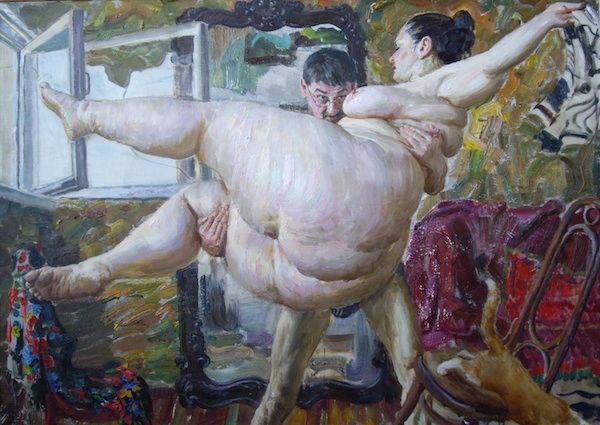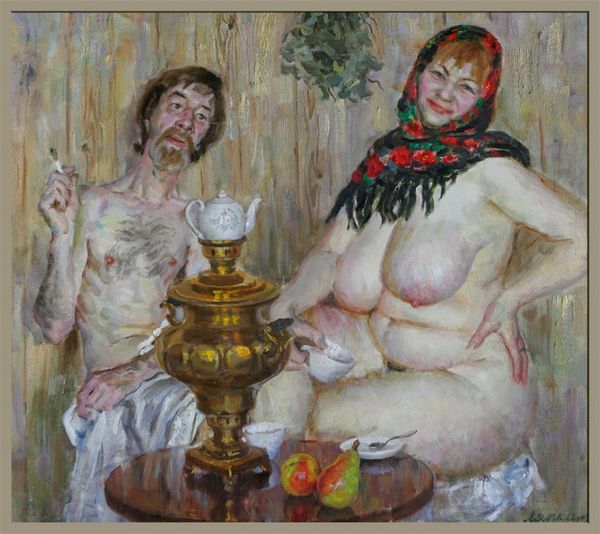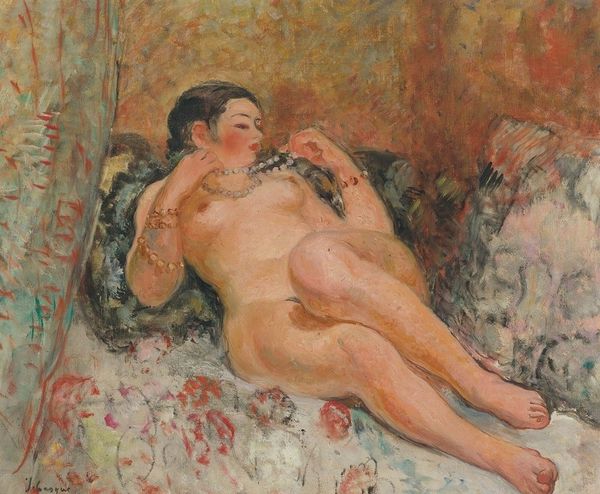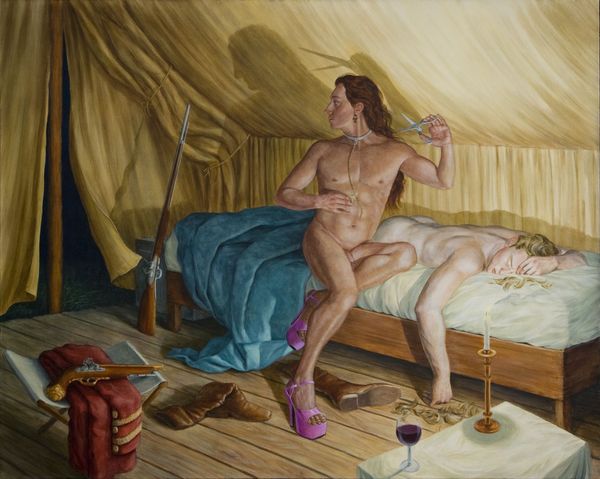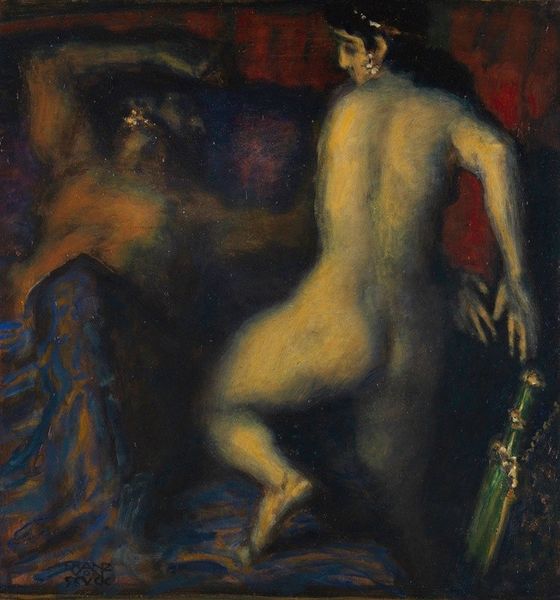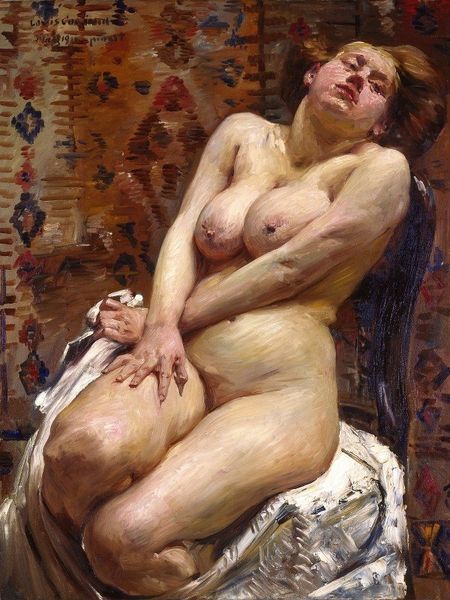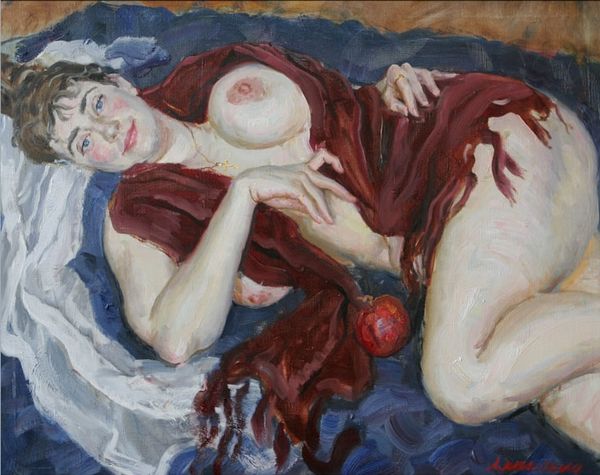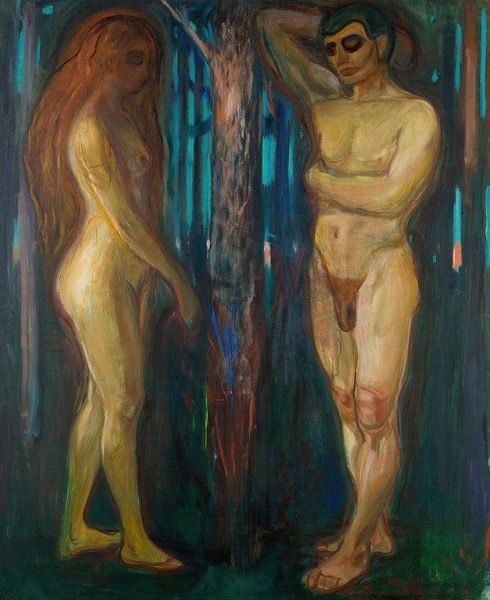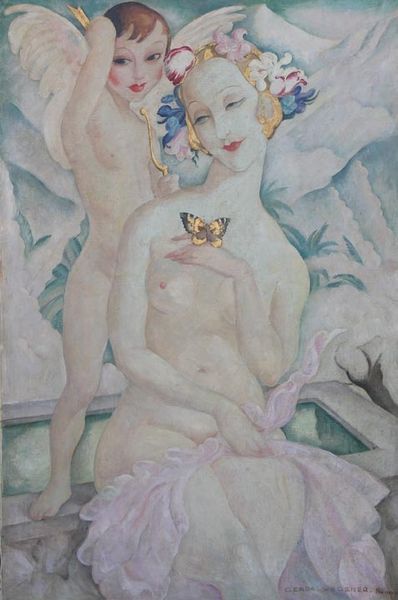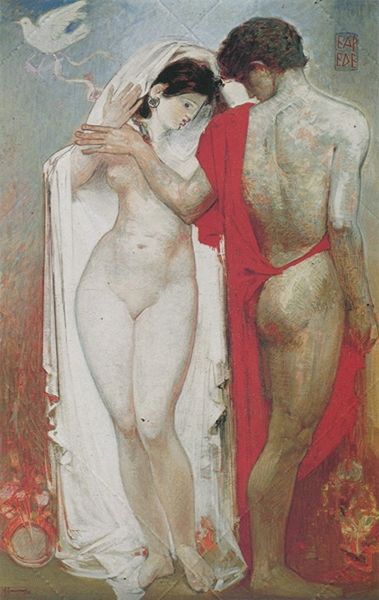
Dimensions: 140 x 120 cm
Copyright: Viktor Lyapkalo,Fair Use
Editor: Here we have Viktor Lyapkalo's "The Morning Tango," an oil painting from 2014. It's certainly... energetic! The figures, their expressions – there's almost a defiant joy in it. What is your read on this piece? Curator: I find this piece fascinating in how it disrupts established norms, both visually and socially. Think about traditional genre painting and the 'male gaze'–this work flips those expectations. How does this painting engage, or perhaps, challenge conventional notions of beauty and the idealized body found within the artistic and museum spheres? Editor: I see what you mean. It’s definitely not your typical, idealized portrayal of figures in art. It feels very raw, unfiltered. But where does that fit in art history, you know? Curator: Exactly. Lyapkalo is consciously positioning this artwork against a history of body shaming prevalent throughout Western Art. Who is invited, or even allowed, into the intimate setting portrayed? Note the performative aspect—how might they be positioning themselves in opposition to those traditionally found in such scenes? It challenges who has historically had the right to representation, agency and even joy in art. What impact does that choice have, and how does it relate to societal conversations around body positivity and representation happening today? Editor: It really does make you think about who gets to be seen, and on what terms. The intimacy here almost feels radical because of that subversion. Curator: Precisely. Lyapkalo has given visibility to those traditionally marginalized in art, providing us with the space to analyze our expectations as consumers of art and confront what kind of social discourse should be promoted in public collections. Editor: This painting offers a strong statement about the democratization of beauty and representation. Thanks, this helps broaden the understanding of what art can accomplish. Curator: It pushes us to challenge established structures of authority, that are presented through artwork displayed in institutions, questioning whose voices and what images we champion. Thank you!
Comments
No comments
Be the first to comment and join the conversation on the ultimate creative platform.
